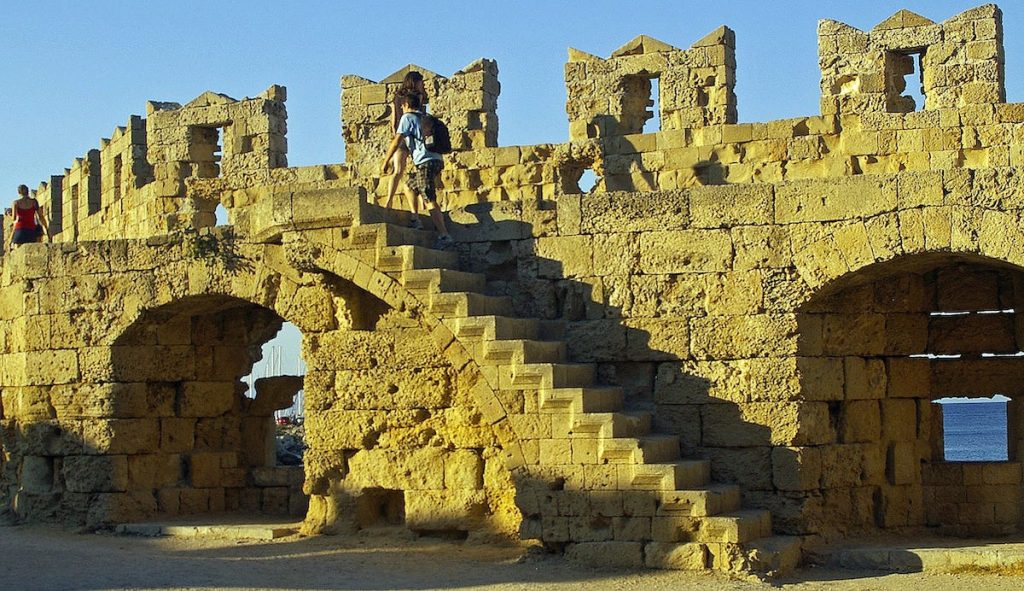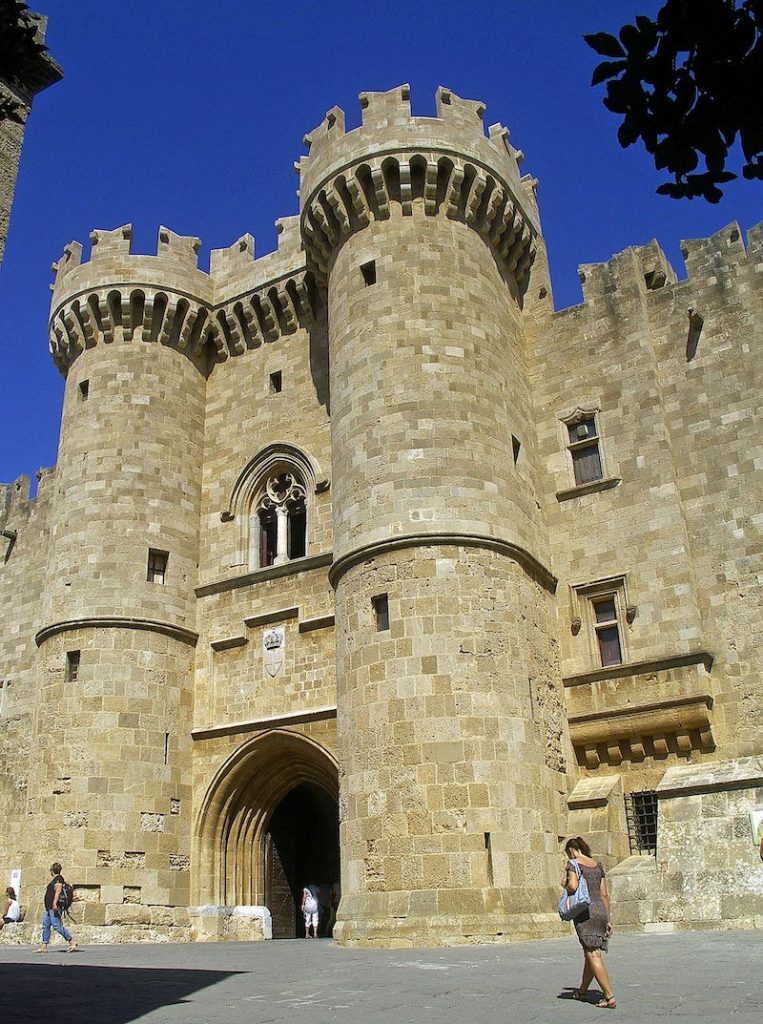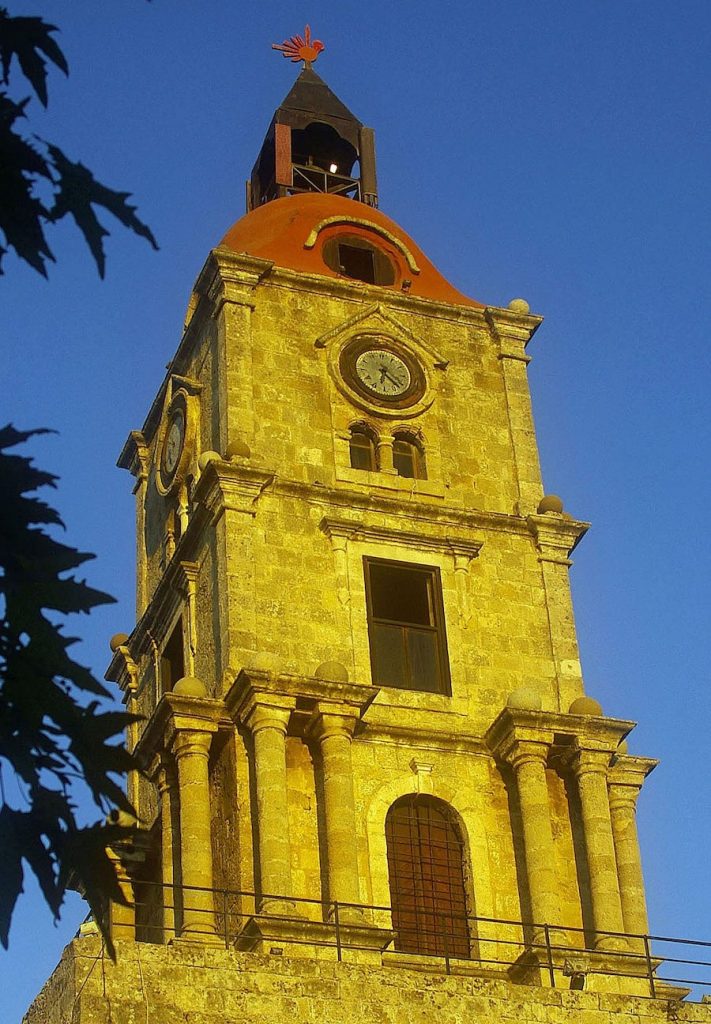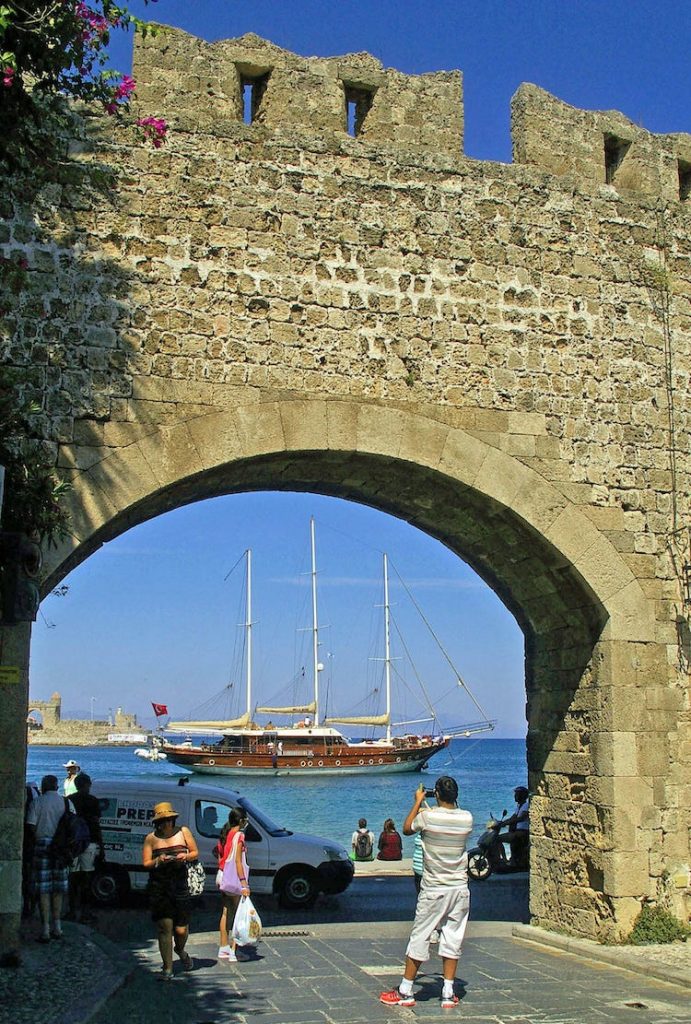Tim Dawe explores Rhodes’ Old Town in this series of Greek Island travels.
I’m in Rhodes, the principal city of the Greek island, Rhodes. It’s a modern city with up-market hotels, boutiques and major department stores selling world brands yet extraordinarily, just 300 metres away, there’s a towering, medieval castle.
No, not a movie set but a real, massive, town-within-a-town, complete with huge moats and entrance gates; everything but a drawbridge. It’s the castle of the Knights of the Order of St John of Jerusalem: the Hospitallers, known today as St John Ambulance.
Rhodes (Old Town) not only dominates this landscape, it’s intact, operational and the oldest inhabited, medieval walled city in Europe. Extraordinary! It looks like the knights have just ridden off.
Western European knights, crusading to free the Holy Lands, evolved to become first-aiders/care-givers to Christians. For this, and their role in stopping the westward spread of Islam, they were awarded the Papal Order of St John. When the Holy Land fell in 1291 the knights retreated, finally arriving in Rhodes in 1309 where they settled – and prevailed. A polyglot group, with naval, military and hospital expertise, they dominated the eastern Mediterranean as a quasi-state for 200 years.
Old Town covers 60ha, fortified by 4km of 12m-thick walls and massive bastions. It was organised in tongues – language/recreational groups, each with their own inn and traditions. Today, the French and Italian inns are used by their respective consulates. Rhodes Old Town is a UNESCO world heritage site.

How to absorb these layers of history? I avoid crowds and midday sun for quieter streets with softer light, dipping in and out during several days – it’s 15-minutes from my hotel. I walk there through the shady greenbelt to Amboise Gate, and cross a former moat, now a meadow. The entrance is suitably heraldic in carved stone. I join others on tree-lined pedestrian streets (they’re all walkways, mostly nameless) passing busy shops and restaurants.
Suddenly I’m looking at this fairy-tale castle – the stunning, 700-year-old Palace of the Grand Master. It’s intact and looks like a new Disneyland attraction. And there’s a reason for this. With the Islamic Ottoman Empire in terminal decline, Italy colonised Rhodes in 1912 destroying mosques, cultural buildings and homes, whilst lavishly restoring the Christian medieval buildings. This explains the absence of ruination by siege and time. Exploring the castle interior, it illustrates grandeur befitting royalty.

Lining the major, pebble-paved Street of the Knights are imposing-looking inns, now modern offices, one squashing the dank, 15th century Holy Trinity Church. I peer into houses with beautiful garden courtyards and fountains. I can imagine this scene with draped horses, clinking chainmail, shouting leather-capped peasants, scattering animals … oh, and the smell!
At the end of this street stands 11th century church, Panagia tou Kastrou, in turn Orthodox, then Catholic. On the southern corner is the extensive Archaeological Museum, formerly a 15th century Knights’ hospital. It’s a museum exhibit in itself, built around a huge courtyard in the style of a Byzantine inn. Numerous statues dating from the Classical and Hellenistic periods adorn the former refectory, kitchen and wards, notably the 2,400-year-old crouching Aphrodite. Nearby are the remains of the Temple of Aphrodite.

Hippocrates Square, near Marine Gate, is a magnet for visitors to meet, eat and shop; mingling as they have for centuries. The western skyline changes dramatically from dark, squat and Gothic to light, curved and Islamic. Crowds jostle in and out of an eclectic range of shops and eateries. Socrates Street returns me to my starting point near the 16th century Mosque of Suleiman which is, like his title, ‘magnificent’. Over the road the Muslim Library serves as repository of a long history. Nearby is a remnant clock tower where visitors can ascend for a birds-eye view of this tangled web of historic streets.
My excursion into the southern streets reveals a very different Old Town. The few people I see aren’t tourists, they’re residents. There’re no grand edifices here, just houses – some derelict. While people work here, they’re not easy to spot unless you peer in. There are carpenters, leatherworkers, metalworkers – oh, and the mechanic’s spilled parts onto the road.
I divert to re-enter via St John’s Gate with its enormous bastion. Looking down to the grassed-bottomed moat I view the Melina Mercouri outdoor theatre, a popular venue for cultural events. I suspect the acoustics are excellent. My objective is to wander and to wonder, not to scurry, ticking-off must-see places or things. Here are schools, children playing in the street, a white-haired, black-robed priest holding forth in a smoky kafeneion with mates: citizens all. It’s not a museum; it’s their community.

Nearby is the sad structure of the boarded-up grand Retzep Pasha Mosque. A billboard advises that millions of EU euros have been allocated to restore it; possibly not a priority. On leaving, I stumble upon Evreon Martyon (Jewish Martyrs) Square, named for the 4,000 resident Sephardic Jews, mostly claimed by the Nazi Holocaust. I leave via Virgin Mary’s gate to the most beautiful scene: a golden and turquoise beach, framed by expensive motor launches with the backdrop of a fairy-tale castle. Those knights knew about building to endure; and waterfront real estate!
Rhodes Old Town illustrates another facet of Greece’s long and fabled history. It’s extraordinary and awe-inspiring. And the mystique of castles and medieval knights makes my visit unforgettable.





























